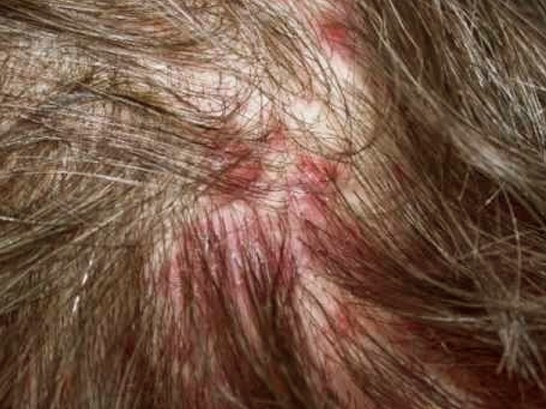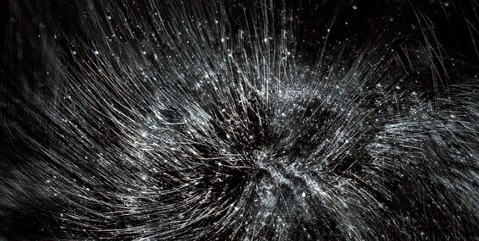Symptoms of Infected Ingrown Hair
Pus collection
In general, the ingrown hair is visible under the skin. In the situation that an infection has appeared around the respective ingrown hair, the pus collection will be visible under the skin as well (yellow or white in color).
Redness
Because of the infection, the blood circulation in the area is going to be more active (white cells come to fight off the infection). As a consequence of the intense blood circulation, redness will surround the area of infection (erythema).
Warmth
Any infection at the level of the skin is warm to the touch, given the active response of the immune system. The warmth is more intense in the erythema area, these two features appearing always together.
Pain and discomfort
Depending on the location of the infected ingrown hairs, it is possible that the patient experiences either discomfort or pain. The more ingrown hairs become infected, the more intense such symptoms are going to be.
Inflammation
Even before the ingrown hair becomes infected, you might notice that the area around it has become inflamed. This is a natural response to the infectious process but it can be quite unpleasant.
Causes of Infected Ingrown Hair
While ingrown hairs are caused by shaving and tweezing, it is important to understand that the actual infection requires a number of favoring factors. For example, such problems are often encountered in those who do not follow standard hygiene measures. They are triggered by bacterial overgrowth, being often seen in reasons that are moist and warm (such as the armpit, genital area and area between the thighs).
Apart from the hygiene problem, ingrown hairs can also become infected in the situation that you have contracted the bacteria from a public place. Among the potential locations, there are public swimming pools, showers and locker rooms. Sharing objects of personal hygiene, such as towels, is also a risk factor for bacterial infections. The same goes for wearing the clothes of another person, as you can never know how clean that person actually is.
Wearing clothes that are too tight can cause ingrown hairs to become infected, especially if there is a lot of moisture in that respective area. While shaving on its own might not trigger an infection at the level of the ingrown hair, not the same thing can be said about the actual shaving blade. If this is not clean or if you have been using it for prolonged periods of time, without cleaning it, you stand a high chance of your ingrown hairs becoming infected.
Fungal infection is also responsible for the appearance of infected ingrown hairs. It is worth mentioning that such problems are often encountered in the male population, due to inadequate shaving; this condition is known as pseudofolliculitis barbae. In the situation that you have become accustomed to constantly picking your skin, you might cause the infection all on your own (by picking the skin, you are creating a barrier for the bacteria to penetrate the pores).
Treatment for Infected Ingrown Hair
A number of treatment methods are recommended when it comes to ingrown hairs that have become infected.
Antibiotics
In the majority of the situations, the ingrown hair has become infected because of bacterial overgrowth. The antibiotic treatment is looking to eliminate the overgrown bacterial population, improving the aspect of the skin at the same time. Depending on the severity of the infection, the doctor can either prescribe topical or oral antibiotics. If the treatment is taken orally, one must complete the entire course of antibiotics, otherwise the bacteria will develop resistance to the treatment. Also, probiotic supplements are administered, so as to maintain a healthy intestinal flora.
Antibacterial soap
In order to clear up the infection, it is recommended that you wash the area of the infected ingrown hairs with antibacterial soap. It is recommended that you using this product at least two times per day, avoiding the excess scrubbing of the skin. When done, pat dry the respective area with a clean towel.
Antiseptic lotion
The antiseptic lotion contains a number of drying agents, with anti-inflammatory properties. You can apply it on the skin with the help of a cotton ball, so as to eliminate the infection. The best products are the ones that contain aluminum chlorohydrate as a main ingredient.
Retinoids
This medication can be recommended as a topical treatment, allowing for the exfoliation of the skin. If you apply it on the infected area, you can stimulate a faster healing process (loosening the hair and eliminating the infection).
Salicylic acid
In the situation that you have noticed ingrown hairs to have become infected after waxing or shaving, this is a great treatment solution to try out. If you do not have salicylic acid, you can just crush an aspirin, mix it with a little bit of water and apply it to your skin. This will reduce the inflammation and also work wonders on the actual infection. Plus, the salicylic acid contained by the aspirin is going to make the ingrown hair loose, making the consequent removal easy.
Acne medication
The active ingredients that are contained in the acne medication, such as benzoyl peroxide, can be quite useful when it comes to treating infected ingrown hairs. All you have to do in order to reduce the inflammation is apply it to the respective area. As an alternative to the acne medication, you can also try applying toothpaste (drying effect).
Removal
You can use a number of methods in order to remove the ingrown hair and clear the infection around it.
Washcloth
If you have noticed one or several infected ingrown hairs, all you have to do is apply a warm & moist washcloth over the respective area. This will stimulate the blood circulation in the area, making the ingrown hair loose and draining the infection.
Gentle exfoliation
Prepare a homemade scrub using olive oil, salt or sugar and other natural remedies. Massage the area of the infected ingrown hairs gently, so as to exfoliate the skin. In this way, you might even see the ingrown hair coming out on its own and the infection starting to drain as well. The one thing that you have to make sure is not too scrub too forcefully, as you might aggravate the existing infection and prolong the necessary healing period. Also, it is recommended to apply moisturizer in the area after the scrub, so as to avoid dehydration.
Tweezing
Repeated tweezing can lead to ingrown hairs, that is known for a fact. But, in the situation that you have noticed the infected ingrown hair has penetrated the skin, you can use a tweezer to remove it. Using a clean pad, disinfect the area and allow it to heal.
Needle removal
As an alternative to the tweezer, you can actually use a needle. The one thing you have to make sure is that the needle is disinfected, either through heat or with alcohol. Also, make sure that you only use the needle when the ingrown hair is has penetrated the surface of the skin. Remove it gently and refrain from squeezing the pus, as you might aggravate the infection. Instead, apply antibiotic ointment and a band aid, allowing the infection to drain on its own. Change the band aid frequently, so as to keep the area clean.
Tea tree oil
In the situation that you suffer from infected ingrown hairs, you can try out a natural remedy as tea tree oil. Dilute it in a little bit of water and apply it on the respective area with the help of a cotton ball. Tea tree oil is known not only for its anti-inflammatory properties but also for its antibacterial benefits, so do not hesitate to use it.
Aloe vera
This natural remedy has anti-inflammatory properties and also it has a soothing effect on the skin. You can apply natural aloe vera gel to the skin with the help of a cotton ball, waiting for the inflammation to subside. As soon as the inflammation has subsided, removing the actual ingrown hair will be a lot easier.
Baking soda
Baking soda has anti-inflammatory properties, plus it can reduce the redness caused by the actual infection. In order to benefit from its properties, dilute it in a little bit of water and apply it to the skin. This will allow for the infection to come to the surface and also make the removal process easier.
Pictures
How does an infected ingrown hair looks like? Take a look at these pictures to have an idea of how they look like:







